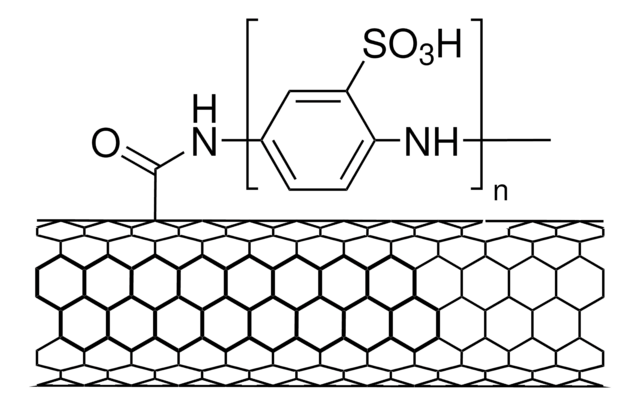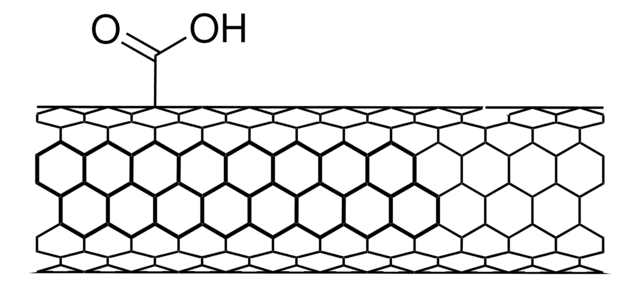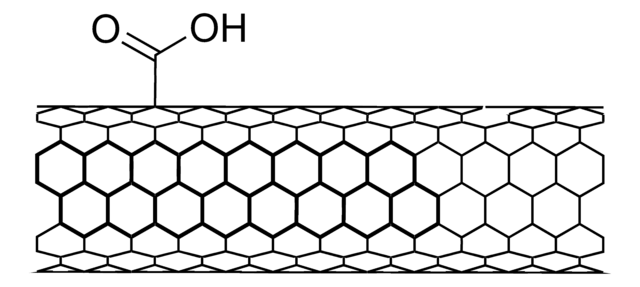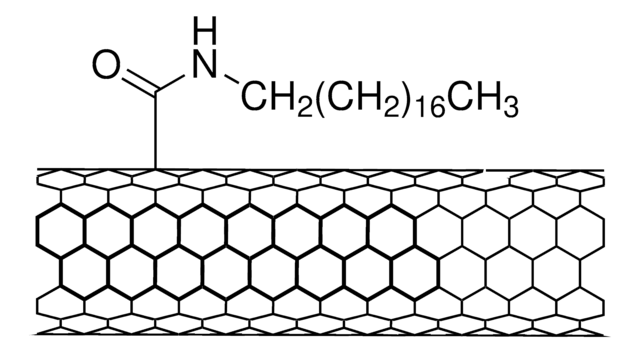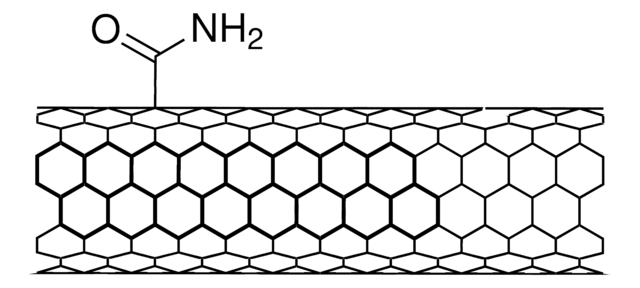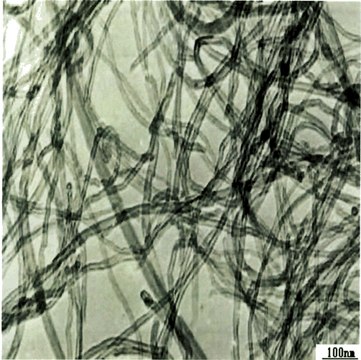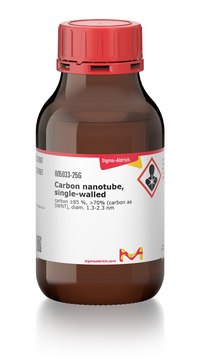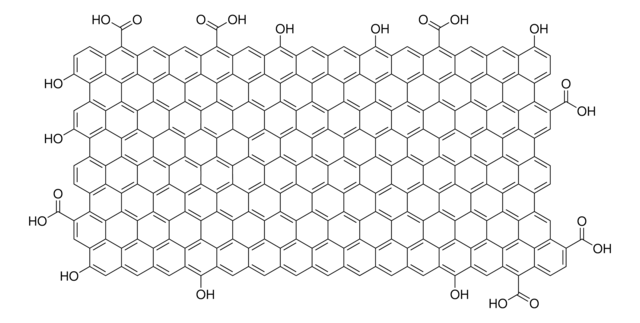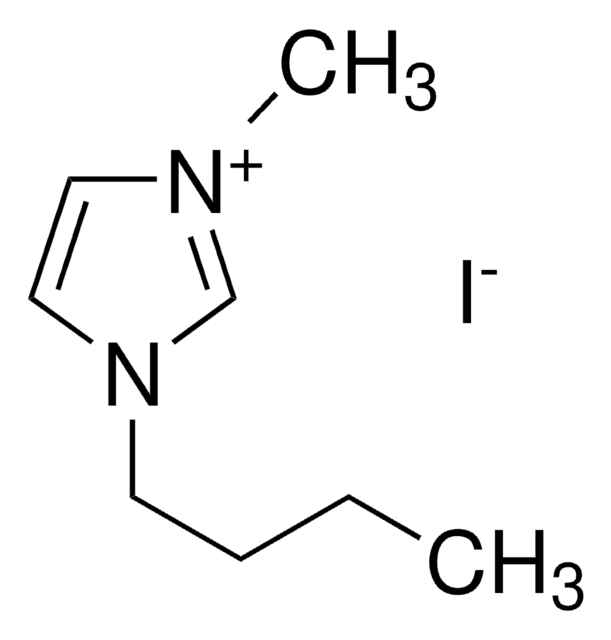652474
Carbon nanotube, single-walled
poly(ethylene glycol) functionalized, >80% carbonbasis, D × L 4-5 nm × 0.5-0.6 μm , bundle dimensions
Synonym(s):
Carbon nanotube, single-walled, PEG functionalized, SWNT, PEG functionalized
About This Item
Recommended Products
Product Name
Carbon nanotube, single-walled, poly(ethylene glycol) functionalized, >80% carbon basis, D × L 4-5 nm × 0.5-0.6 μm , bundle dimensions, avg. no. of layers, 1
Assay
>80% carbon basis
form
powder
mol wt
Mw ~600 g/mol (PEG)
feature
avg. no. of layers 1
D × L
4-5 nm × 0.5-0.6 μm , bundle dimensions
impurities
4-5% trace metals
solubility
H2O: 5 mg/mL
functional group
PEG
Preparation Note
Typically after this procedure, the material is completely dispersed according to visual observation.
Sonicate 50 mg of material in 5 mL water for 30 min. (A bath sonicator with a sonic power between 45 W and 270 W works fine. A sonic power of 270 W is preferable for faster dispersion).
Add 45 mL of water and sonicate for additional 60 min (or until the material appears well-dispersed).
Dilute the dispersion to the desired concentration and sonicate if necessary. If aggregates are still visible continue to sonicate until satisfactory dispersion is obtained. Note: If unable to achieve a satisfactory dispersion, reduce the initial amount of 50 mg of material in 5 mL of water.
This procedure is to be used as a basis and additional procedures can be researched. Results may vary if this is the first time working with this material. Solubility of this PEG-functionalized SWNTs product can reach 5.0 mg/mL in water.
Analysis Note
Signal Word
Warning
Hazard Statements
Precautionary Statements
Hazard Classifications
Eye Irrit. 2 - STOT SE 3
Target Organs
Respiratory system
Storage Class Code
11 - Combustible Solids
WGK
WGK 3
Flash Point(F)
Not applicable
Flash Point(C)
Not applicable
Personal Protective Equipment
Choose from one of the most recent versions:
Already Own This Product?
Find documentation for the products that you have recently purchased in the Document Library.
Articles
Carbon nanotubes are materials that possess remarkable properties and offer extraordinary possibilities.
Carbon nanotubes (CNTs) have received much attention since their discovery in 1991 by Sumio lijima1 due to their excellent mechanical, electrical, and optical properties.
A nanocomposite is typically defined as a mixture between a host material (e.g., polymer matrix) and nanofillers with at least one dimension of less than 100 nm.
SWCNTs show promise in FETs, solar cells, and photodetectors due to their ultrafast charge transport mobility.
Our team of scientists has experience in all areas of research including Life Science, Material Science, Chemical Synthesis, Chromatography, Analytical and many others.
Contact Technical Service